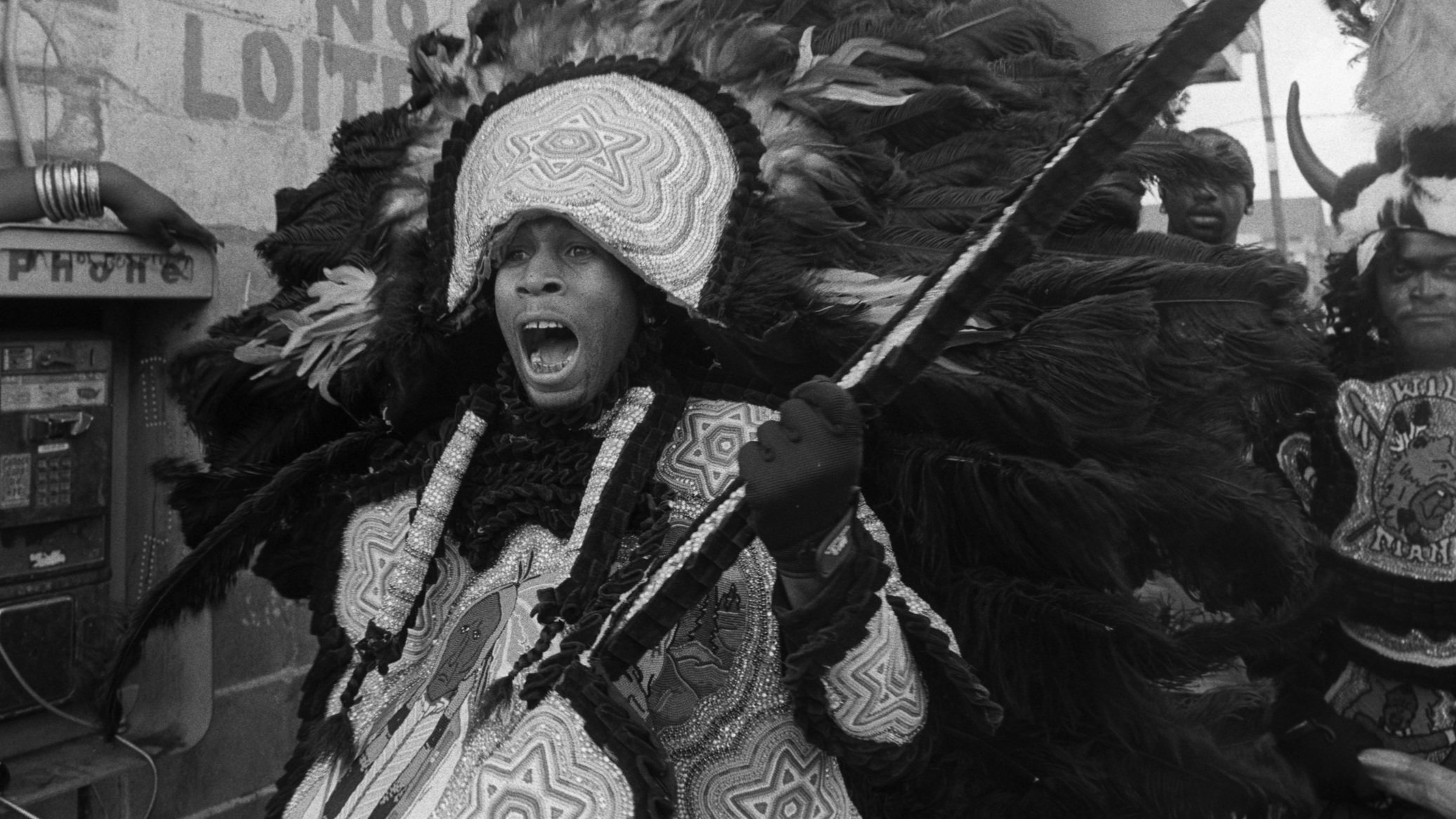Demond Melancon
Big Chief of the Young Seminole Hunters
Black Masking Culture of New Orleans
The Origin of One of the Oldest Traditions in New Orleans is Shrouded in Mystery
Some people say the roots of the Black Maskers of New Orleans are buried in slavery, while others believe they originated with the earliest native people of Louisiana. Today, the Black Masking Culture of New Orleans represents a living, breathing culture surrounded by feathers and woven in beads. It is a culture of pride and honor, ritualistic song and dance, spirituality and craftsmanship. On Mardi Gras morning across New Orleans from Uptown to the Ninth Ward, Black Maskers emerge from their homes to the beating of drums and tambourines to parade their way through the streets to confront each other in ceremonial battle wearing intricately beaded suits covered in colorful ostrich plumes, glass beads, feathers, and rhinestones. The art that the Black Maskers create is some of the most important contemporary African diasporan art in our country. This multi-faceted, fully developed culture is over 200 years old and is still thriving in New Orleans today.
Who Are the Black Maskers of New Orleans?
The Black Masking Culture of New Orleans (also referred to as the Mardi Gras Indians) represents a classic example of a hidden culture quietly serving the spiritual needs and interests of a tightly knit community. The Black Maskers of New Orleans are a striking example of a cultural treasure which deserves recognition and appreciation as one of the most important forms of contemporary African diasporan art in our country. This unique culture, which has been practicing in New Orleans since the 1800s, is composed of a diverse and highly complex group of people who keep alive a two century bond between African-Americans and Native Americans. Throughout their history Black Maskers have been oppressed, misunderstood, and misrepresented. But they are indeed a classic example of a hidden culture quietly serving the spiritual needs and interests of a tightly knit traditional community, carrying on and preserving a complex ancestral tradition of music, art, and culture.
History & Origin
The history of the Black Maskers of New Orleans has been passed down orally through generations. Even within the Black Masking community, there are many conflicting stories of how the Black Masking Indians of New Orleans came to be. One common belief is that local Native American tribes sheltered enslaved Africans who had managed to run away, eventually fighting alongside them in the resistance against Anglo subjugation. Some Black Maskers honor their roots as direct ancestors of Native Americans, while others believe the intermingling of Native Americans with Creoles, enslaved Africans, and free people of color in Congo Square brought about the merge. The bond between African-Americans and Native Americans dates back to the 1780s when enslaved people from all parts of Africa were transported to New Orleans as part of the Transatlantic Slave Trade. Both the Native Americans and these freedom-seeking Blacks shared a reverence for the spirits of their ancestors, a strong belief in seasonal changes, and traditions which used ceremonial dress. There is strong evidence that the suits of modern day Black Maskers of New Orleans are a cross between the ritualistic dress worn among Africans and Native Americans.


























